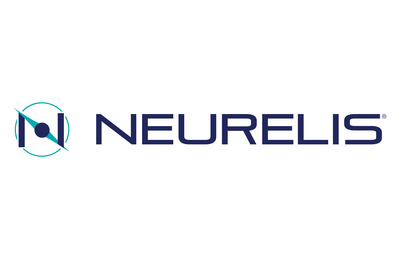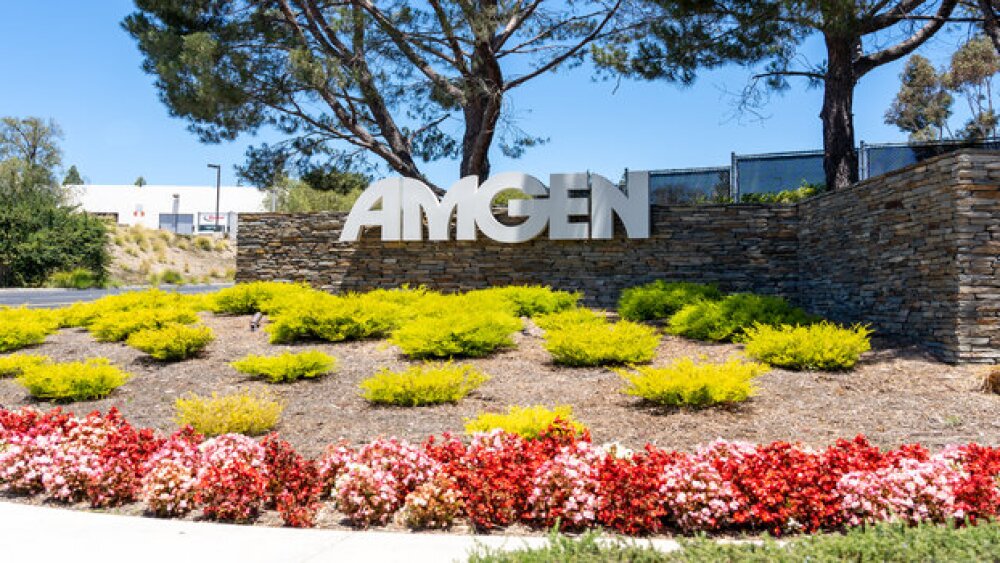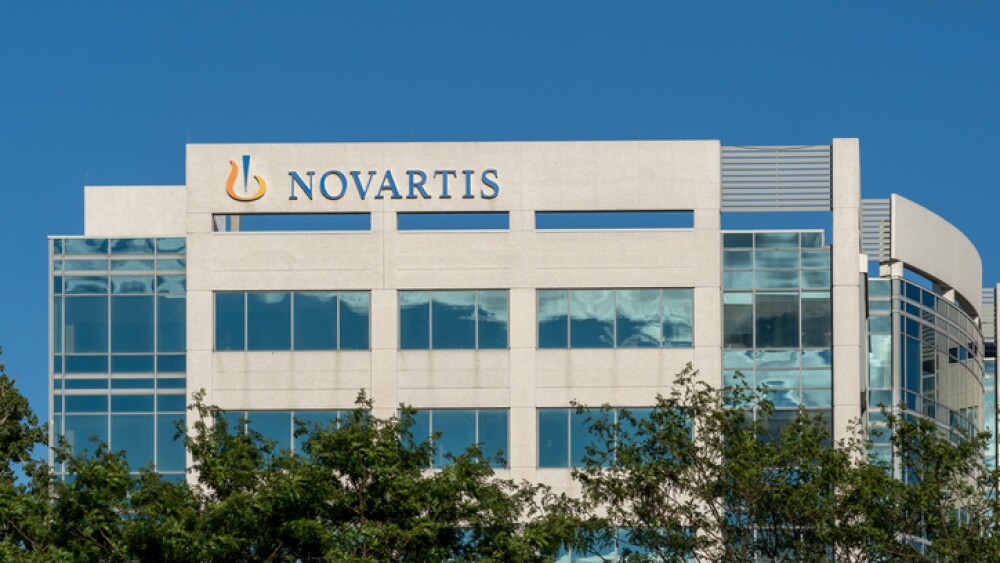| |
- Largest gathering of people with epilepsy, their care partners, and health care providers
- Epilepsy and care partner testimonials from Neurelis Ambassadors
- Seizure alert and response puppy-in-training from Little Angels Service Dogs
SAN DIEGO, Oct. 30, 2023 /PRNewswire/ -- Neurelis, Inc., is proud to take part in the 11th Annual Sofie's Journey Epilepsy Awareness Day and Education Expo at Disneyland Resort (EADDL), the largest, worldwide epilepsy community gathering of the year. The event kicks off with a free Expo on Oct. 30 and Oct. 31, 9:00 a.m. to 5:00 p.m. at the Disneyland Hotel Convention Center. Epilepsy Awareness Day will take place on Nov. 1, at Disneyland Resort.
"We look forward to joining the epilepsy community at Epilepsy Awareness Day at Disneyland, an event filled with excitement and hope," said Neurelis Founder and CEO Craig Chambliss. "It aligns synergistically with our mission at Neurelis to improve the lives of people with epilepsy and minimize the disruption and damage caused by seizures. We partner to empower people with epilepsy to have a seizure action plan and be an advocate for themselves in their care journey."
Neurelis will sponsor a presentation of its FDA-approved product, VALTOCO, an acute treatment for frequent seizure activity for patients with epilepsy six years of age or older, on Oct. 30 from 11:30 a.m. to 12:00 p.m. in the Expo Center, Room B. The presentation will feature Raman Sankar, MD, PhD, Chief of Pediatric Neurology at the David Geffen School of Medicine, University of California, Los Angeles. Joining Neurelis at the Expo will also be people with epilepsy and care partner ambassadors to share their experiences of living with and managing seizure clusters.
"I am honored to attend this event alongside those who fully understand what day-to-day life is like with epilepsy," said DeJah Jenkins, person with epilepsy and Neurelis Ambassador. "Having the opportunity to share my story is truly empowering. VALTOCO has changed the way I manage my seizure clusters and given me confidence to be a voice for others living with this disease."
DeJah was diagnosed with epilepsy nearly ten years ago at age 18. Before her first seizure, she had no symptoms but over the years she gradually started experiencing visual auras. An aura, while different for everyone, can be a physical, emotional, or sensory change. The now 27-year-old works as a medical assistant at a neurology office where she can stay up-to-date on the latest epilepsy studies with neurologists and co-workers.
"As a care partner to a child living with frequent seizure activity, VALTOCO has made a significant impact on our lives in the acute management of seizure clusters," said Ami Waggoner, care partner and Neurelis Ambassador. "I am so glad I will be able to be able to share our story with the epilepsy community to continue to raise awareness for a disease that affects millions across the nation."
Ami is the mother and care partner to 15-year-old son, Luke. Luke received an epilepsy diagnosis at age five, the same year he experienced his first seizure. At age 12, he was officially diagnosed with Lennox-Gastaut syndrome (LGS), a severe form of epilepsy. Ami, a registered nurse, volunteers at Luke's treating hospital, is an active part of the epilepsy and Lennox-Gastaut community, and is a parent mentor to newly diagnosed families.
Additionally, a seizure detection and response puppy sponsored by Neurelis will be featured at the VALTOCO exhibit booth. The puppy is undergoing extensive training with Little Angels Service Dogs, an internationally accredited non-profit organization, to become a seizure-response dog to assist a person with epilepsy.
EADDL is part of November's National Epilepsy Awareness Month, which promotes the importance of epilepsy education and awareness, and improving the lives of those impacted by the condition. For more information about EADDL, visit www.epilepsyawarenessday.org and to register for the Expo, click here.
About EADDL and Sofie's Journey
EADDL is the combined effort of one family's thankfulness for their own daughter's recovery (10+ years seizure free) and a united community with a passion for winning the fight against epilepsy. It is operated by the Irvine, Calif.-based, non-profit foundation, Sofie's Journey, to drive epilepsy awareness by bringing together patients, families/caregivers, physicians, advocates, non-profits, services, and the biopharmaceutical industry. EADDL and Sofie's Journey were launched by Candy and Brad Levy, whose daughter Sofie, now 19 years old, underwent surgery in 2013 to remove a part of her brain that caused her seizures. Their mission is to drive epilepsy awareness, the key to overcoming challenges created by epilepsy.
About Neurelis
Neurelis, Inc., is a neuroscience company focused on the development and commercialization of therapeutics for the treatment of epilepsy and orphan neurologic disorders characterized by high unmet medical need. In 2020, the FDA approved Neurelis' VALTOCO® (diazepam nasal spray) as an acute treatment of intermittent, stereotypic episodes of frequent seizure activity (i.e., seizure clusters, acute repetitive seizures) that are distinct from an individual's usual seizure pattern in adult and pediatric patients 6 years of age and older. VALTOCO is a proprietary formulation of diazepam incorporating the science of INTRAVAIL®. Intravail's transmucosal absorption enhancement technology enables the noninvasive delivery of a broad range of protein, peptide and small-molecule drugs. In its approval of VALTOCO, the U.S. Food and Drug Administration also granted Neurelis Orphan Drug Exclusivity and recognized VALTOCO's intranasal route of administration as a clinically superior contribution to patient care over the previously approved standard-of-care treatment (a rectal gel formulation of diazepam). For more information on VALTOCO, please visit www.valtoco.com. In addition, Neurelis is developing NRL-1049 (previously known as BA-1049), an investigational, Phase I stage small molecule Rho kinase (ROCK) inhibitor, for the treatment of cerebral cavernous malformations (CCMS), a rare disorder of the central nervous system (CNS). For more information on Neurelis, please visit www.neurelis.com. For the latest scientific information on VALTOCO, please visit http://www.neurelismedicalaffairs.com/.
Important Safety Information about VALTOCO:
Indication
VALTOCO® (diazepam nasal spray) is indicated for the acute treatment of intermittent, stereotypic episodes of frequent seizure activity (i.e., seizure clusters, acute repetitive seizures) that are distinct from a patient's usual seizure pattern in patients with epilepsy 6 years of age and older.
WARNING: RISKS FROM CONCOMITANT USE WITH OPIOIDS; ABUSE, MISUSE, AND ADDICTION; and DEPENDENCE AND WITHDRAWAL REACTIONS
- Concomitant use of benzodiazepines and opioids may result in profound sedation, respiratory depression, coma, and death. Reserve concomitant prescribing of these drugs for patients for whom alternative treatment options are inadequate. Limit dosages and durations to the minimum required. Follow patients for signs and symptoms of respiratory depression and sedation.
- The use of benzodiazepines, including VALTOCO, exposes users to risks of abuse, misuse, and addiction, which can lead to overdose or death. Abuse and misuse of benzodiazepines commonly involve concomitant use of other medications, alcohol, and/or illicit substances, which is associated with an increased frequency of serious adverse outcomes. Before prescribing VALTOCO and throughout treatment, assess each patient's risk for abuse, misuse, and addiction.
- The continued use of benzodiazepines may lead to clinically significant physical dependence. The risks of dependence and withdrawal increase with longer treatment duration and higher daily dose. Although VALTOCO is indicated only for intermittent use, if used more frequently than recommended, abrupt discontinuation or rapid dosage reduction of VALTOCO may precipitate acute withdrawal reactions, which can be life-threatening. For patients using VALTOCO more frequently than recommended, to reduce the risk of withdrawal reactions, use a gradual taper to discontinue VALTOCO.
Contraindications: VALTOCO is contraindicated in patients with:
- Hypersensitivity to diazepam
- Acute narrow-angle glaucoma
Central Nervous System (CNS) Depression
Benzodiazepines, including VALTOCO, may produce CNS depression. Caution patients against engaging in hazardous activities requiring mental alertness, such as operating machinery, driving a motor vehicle, or riding a bicycle, until the effects of the drug, such as drowsiness, have subsided, and as their medical condition permits.
The potential for a synergistic CNS-depressant effect when VALTOCO is used with alcohol or other CNS depressants must be considered, and appropriate recommendations made to the patient and/or care partner.
Suicidal Behavior and Ideation
Antiepileptic drugs (AEDs), including VALTOCO, increase the risk of suicidal ideation and behavior. Patients treated with any AED for any indication should be monitored for the emergence or worsening of depression, suicidal thoughts or behavior, and/or unusual changes in mood or behavior.
Glaucoma
Benzodiazepines, including VALTOCO, can increase intraocular pressure in patients with glaucoma. VALTOCO may only be used in patients with open-angle glaucoma only if they are receiving appropriate therapy. VALTOCO is contraindicated in patients with narrow-angle glaucoma.
Neonatal Sedation and Withdrawal Syndrome
Use of VALTOCO late in pregnancy can result in sedation (respiratory depression, lethargy, hypotonia) and/or withdrawal symptoms (hyperreflexia, irritability, restlessness, tremors, inconsolable crying, and feeding difficulties) in the neonate. Monitor neonates exposed to VALTOCO during pregnancy or labor for signs of sedation and monitor neonates exposed to VALTOCO during pregnancy for signs of withdrawal; manage these neonates accordingly.
Risk of Serious Adverse Reactions in Infants due to Benzyl Alcohol Preservative
VALTOCO is not approved for use in neonates or infants. Serious and fatal adverse reactions, including "gasping syndrome," can occur in neonates and low-birth-weight infants treated with benzyl alcohol–preserved drugs, including VALTOCO. The "gasping syndrome" is characterized by central nervous system depression, metabolic acidosis, and gasping respirations. The minimum amount of benzyl alcohol at which serious adverse reactions may occur is not known.
Adverse Reactions
The most common adverse reactions (at least 4%) were somnolence, headache, and nasal discomfort.
Diazepam, the active ingredient in VALTOCO, is a Schedule IV controlled substance.
To report SUSPECTED ADVERSE REACTIONS, contact Neurelis, Inc. at 1-866-696-3873 or FDA at 1-800-FDA-1088 (www.fda.gov/medwatch).
Please read full Prescribing Information, including Boxed Warning.
Contacts:
Neurelis:
Brittany Bradrick, Chief Operating Officer and Chief Financial Officer, +1 858 251 2135
Media:
Glenn Silver, FINN Partners, +1 646 871 8485
 View original content to download multimedia:https://www.prnewswire.com/news-releases/neurelis-to-participate-in-11th-annual-sofies-journey-epilepsy-awareness-day-and-education-expo-at-disneyland-resort-301970794.html View original content to download multimedia:https://www.prnewswire.com/news-releases/neurelis-to-participate-in-11th-annual-sofies-journey-epilepsy-awareness-day-and-education-expo-at-disneyland-resort-301970794.html
SOURCE Neurelis, Inc.
|
|





